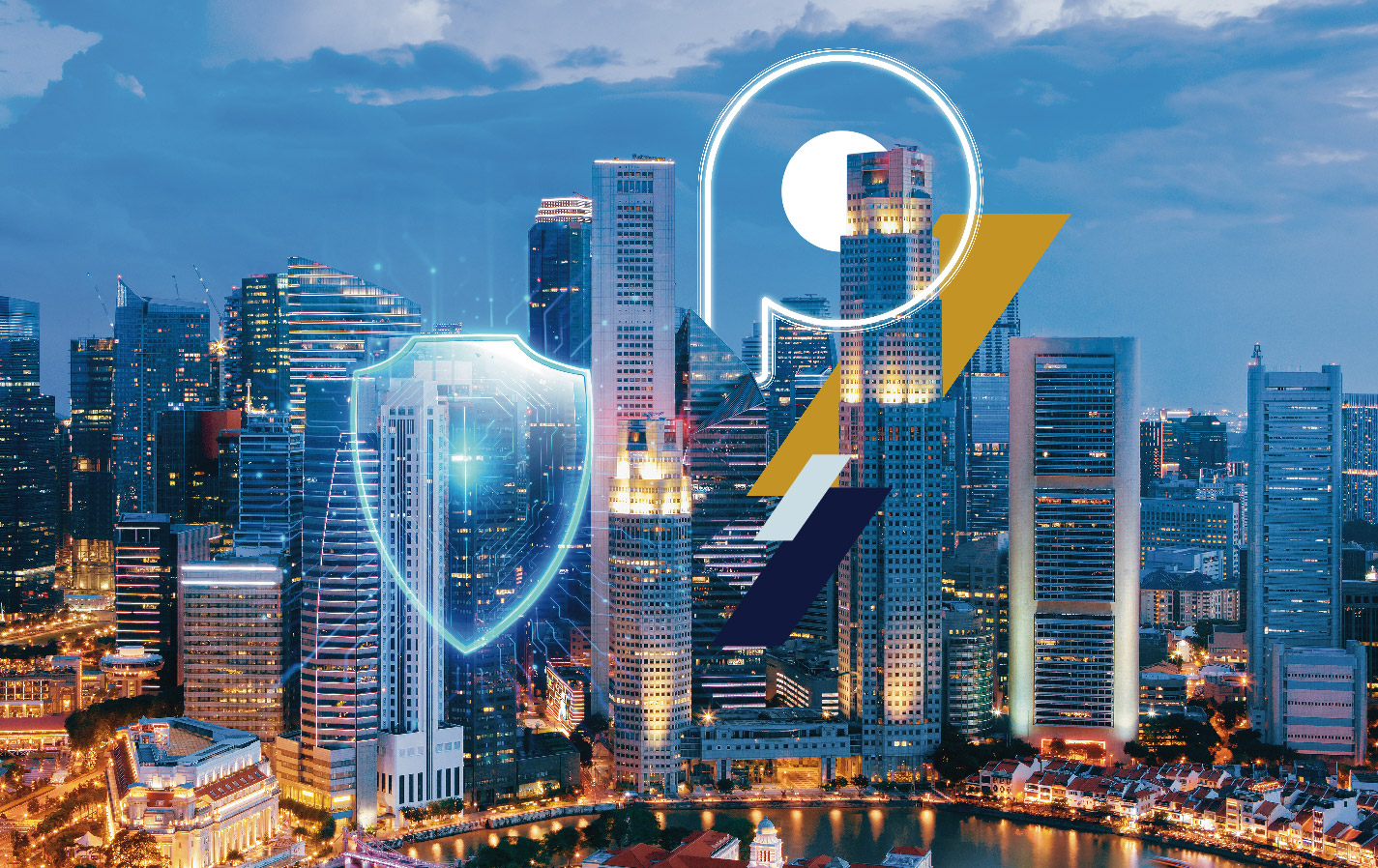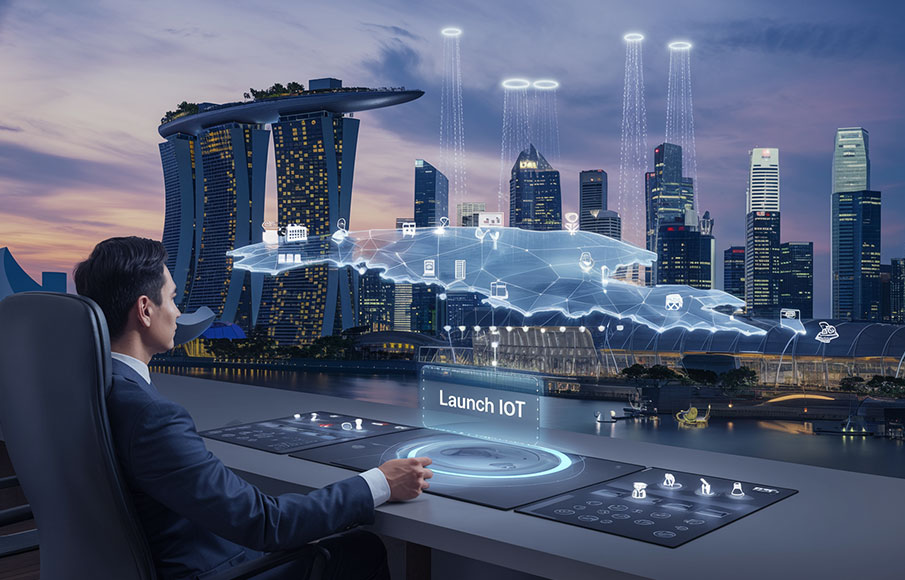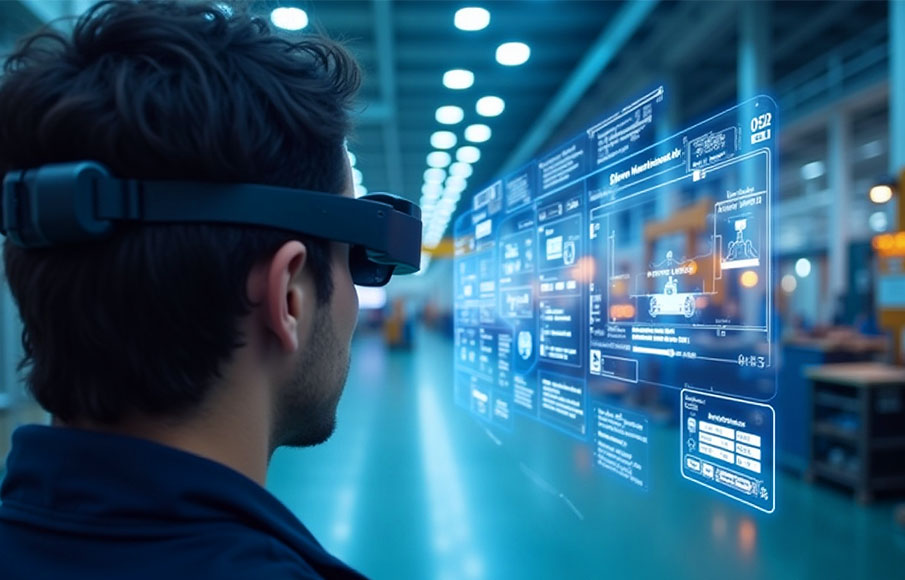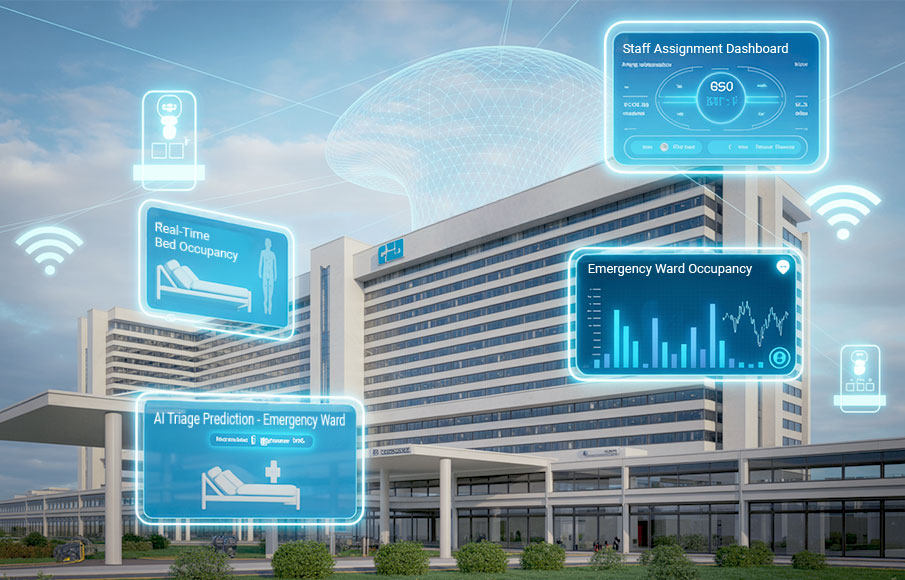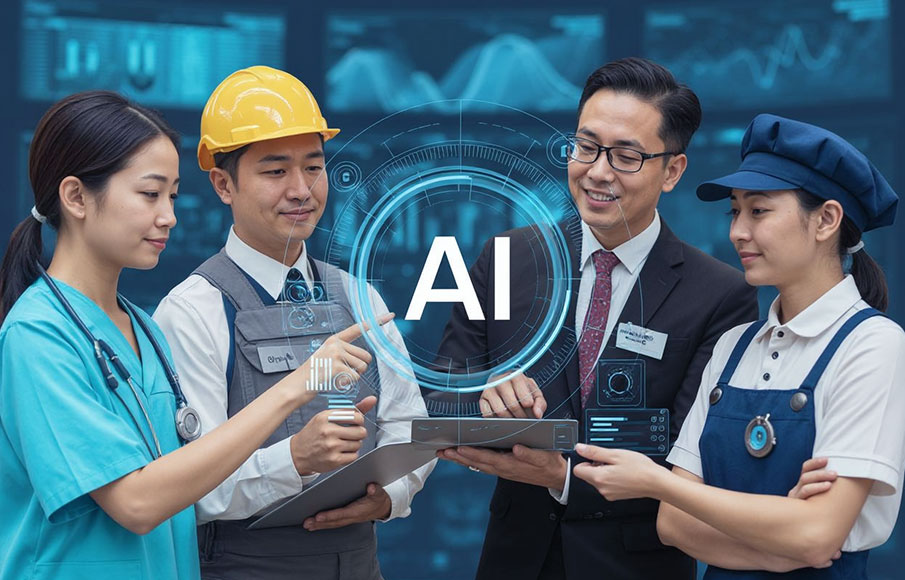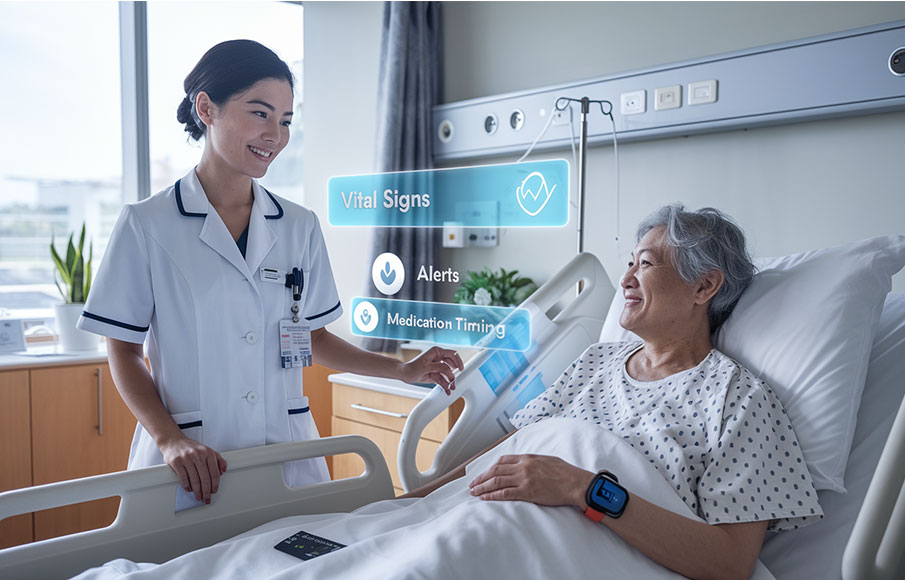A Comprehensive IoT Intro for Businesses [With Case Studies in Singapore]
- 17 May 2021
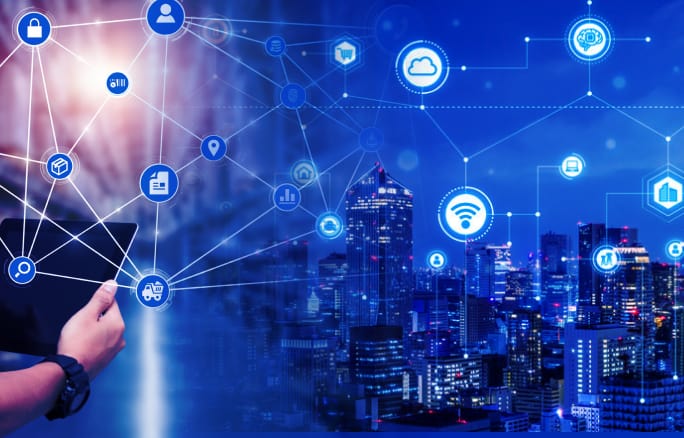
The “Internet of Things” has been a buzzword you may have heard about lately. However, it can be simply defined as inter-connected objects that can collect and transfer data through a wireless network without the intervention of humans. The opportunities that the Internet of Things (IoT) provides are endless. These IoT devices can refer to many things such as a solar panel, a biochip transponder, connected medical devices, and others.
If you are running a business, you can utilize IoT to reduce operational costs, increase revenue and improve efficiencies. IoT devices provide the data and insights needed to visualize usage patterns, streamline workflows, meet compliance requirements, and automate processes. Ultimately, the implementation of IoT will improve your products and services and allow your business to stay competitive.
Internet of Things for Businesses
The Internet of Things can be broken down into these main core functions.
Collect and Send Information with Sensors
Companies can use sensor equipment to detect environmental factors, movement, usage patterns etc. This can include detecting factors that impact performance and quality control such as temperature, light, air quality, motion, and moisture. This data can provide valuable insights into your business operations and areas for improvement.
Receive and Act
Once you have the necessary data, the next important thing is to be able to react to changing business needs. Sensors will forward the data collected to the receive-and-act software. These are usually automatically built into the monitoring and analytics system. This technology will alert users when a fault or anomaly is detected so that actions need to be taken.
For example, if you are running an F&B chain, you can install sensors within your refrigerator to monitor temperature levels. The moment temperature levels pass a certain threshold, you can receive an alert to act immediately to rectify the issue instead of only finding out when there is a break down and food spoilage has happened. This will help mitigate any losses and help F&B stores meet Singapore Food Agency food safety best practices.

Another example of IoT in action would be in Urban Farms. These new, smart agriculture businesses can use sensors to track information about soil moisture, PH levels and nutrient content. With this data, smart technology can be programmed to automatically turn on the irrigation system or alert farmers when conditions become unfavourable for optimum plant growth. In addition, these devices can be fed real-time weather forecasts so that it knows when rain is coming or if it’s going to be a sunny day. This way, it can improve utilities efficiency, such as turning off the irrigation system when rain is expected.
Benefits of IoT
Having an IoT strategy in place can do wonders to increase the productivity of your company. However, you may be wondering, how exactly can you best leverage IoT?
Here are some real-world examples to spark your imagination!
Safety Improvement
IoT smart sensors can be used to identify and reduce threats to businesses.
For example, in the manufacturing sector, you can use sensors to track, control and manage factors like power loss, temperature fluctuation, water intrusion, and other events that may threaten your operational safety.
For an office building, you can use a sensor-enabled lock that lets you remotely deactivate or activate doors to ensure better security. Businesses can also add IoT sensors onto windows and doors to prevent intrusions. When trespassing does happen, it will immediately notify you and your team of unauthorized access.
This is one way you can protect valuable assets such as your corporate data and inventory.
Operational Efficiency
With IoT, smart devices have sensors that can monitor and track performance 24/7. This ensures that key metrics can be evaluated, and your management team will know whether the equipment is functioning at optimal efficiency. When a piece of equipment has a reading that is outside of pre-programmed thresholds, management can act quickly by pin pointing the root cause and assigning technicians for predictive maintenance. This minimizes the potential disruptions and loss of efficiency.

Fulfillment centers can improve inventory management and supply chain by using sensor-equipped robots to take inventory. This will allow fast and precise mapping of inventory quantity and locations. Machinery such as forklifts can have sensors to detect obstacles and people to plot the safest and most effective route to reach their destination.
Retail stores can use facial recognition and smart store displays to serve relevant ads to their customers. By detecting whether it’s a male or female viewer or the age of the customer, customised messaging can be displayed. This maximises the utility of store ad display spaces and can help to drive better in store engagement. Facial recognition sensors can even be further programmed to identify loyal customers, viewer emotions as well as attention span to further improve future advertisements and in-store messaging or promotions.
Lower Costs
Cost savings is a key factor for business success. IoT allows you to lower operating costs by reducing manpower requirements, digitalising manual repetitive tasks and minimising wastage.
In the case of facilities management for example, tasks that are labour intensive such as toilet maintenance, can be made more efficient. Sensors can be installed in toilets to monitor ammonia levels, water pooling and even hazards such as smoke or if someone has fallen. By using IoT, cleaning crews can manage more toilets and be alerted automatically of toilets that require cleaning via a message to their mobile device, instead of having them on a regular, shift schedule. This reduces manpower requirements and automates the management process resulting in improved cost savings.
The Time to Implement IoT Technology for Your Business is NOW!

In the 2021 Budget, the Singapore government plans to spend $24 billion over the next three years to provide the resources that small businesses and enterprises need to thrive post-pandemic.
One of their missions is to supply businesses with capital to help build the capabilities and innovation necessary for their next transformation phase.
The financial capital will go towards many initiatives such as the Emerging Tech program. This program aims to fund the adoption of emerging technology such as cybersecurity, artificial intelligence, automation, and 5G.
The government is keen on creating an AI hub in the country by creating a dedicated data science consortium and investing $150 million into industry research. This strategy was fueled by the reconfiguration of the global supply chain, the speed of technological advances, and the urgency to remain competitive post pandemic.
With an incredible amount of government support, it is time to start considering how you can use IoT to scale and transform your business.
Challenges of IoT Implementation
The benefits of the Internet of Things are clear. However, its deployment does comes with challenges.
Don’t Know Where to Start
Some businesses want to begin IoT implementation but don’t know where to start. There are so many components that a business will need to manage to create a cohesive IoT ecosystem. For instance, a business will need to source for IoT service providers to determine which solution will best fit their needs. They will then need to consider how to deal with device management, connectivity and privacy and security issues, especially when moving your data onto a cloud service.
Also, businesses will need to know how to interpret their data and identify the relevant data points to generate actionable insight. Not to mention, your IT team will have to deal with increased infrastructure complexity with more connected devices, causing a strain on IT resources.
Need to Manage Multiple Vendors
It will be most efficient for a business if all their IoT devices are connected and work together in a single ecosystem. However, there is no one solution that can solve all needs, therefore you will typically need to get piecemeal solutions from separate providers.
Unfortunately, interoperability is threatened when businesses must manage multiple service providers and vendors. Multiple vendors usually mean having to learn and adopt different platforms, gateways and operating systems to support their devices. As of now, the lack of Internet of Things industry standards is a major contributor to this issue.
How to implement computing resource
Cloud computing is where remote servers provide resources to host storage, data, emails, and applications.
Many small businesses and enterprises use cloud computing services such as Google Cloud and AWS because these are scalable and affordable solutions to support their IoT applications. The benefit of cloud computing is that you enjoy cost savings because you increase or decrease computing power that suits your needs. With cloud computing services, you typically pay a monthly subscription to utilize computing power. In addition, customers don’t have to maintain or manage their own on-premise servers.
However, this service has some disadvantages depending on the use cases. Using a cloud can lead to delays in processing and sending information since the data is computed far from the source. The customer has no control over the location that the data is being processed, resulting in low responsiveness. Although cloud computing is more cost efficient and scalable, it can actually hurt your IoT device end to end performance.
In contrast, on-premise solutions are stored and managed within your location. This will provide the lowest latency when it comes to computing. However, you will need to use and maintain your own infrastructure to run and store your servers. This will result in a heftier initial investment for the infrastructure and hardware. The ongoing cost will also be higher as you will need to support the power consumption, storage space, and maintenance. Since it requires such a large investment in software and hardware, it isn’t easy to scale.
SPTel’s IoT-a-a-S and Edge Cloud Computing is the Solution

This is where SPTel can come in to help ease your concerns. With an award winning IoT as a Service (IoT-a-a-S) platform as well as an IoT partner ecosystem, we provide a one stop solution for your IoT needs.
Don’t know where to start sourcing for solutions? Share with us your problem statement and let us recommend the right IoT solution for you. Our IoT partner solutions all sit within our ready IoT-a-a-S platform that comes with a gateway, device management platform, compute resource as well as network backhaul. This does away with concerns of interoperability as the solutions are already on a common platform.
To address computing concerns, SPTel’s Edge Cloud Computing improves the responsiveness devices by providing compute resources closer to the data source. This is done by turning our secure pervasive hubs around the island into edge computing locations. Provisioned on an as a service model, it reduces your need to invest in costly equipment while providing you with the flexible scalability of cloud. This is especially useful for multi-site use cases whereby 2 or more locations can possibly tap onto the same edge compute node. It also reduces your need to transmit huge data payloads to the cloud for computing, which increases the bandwidth requirements of your backhaul connectivity.
Best of all, SPTel has digitalised its processes so that turning on additional sensors or IoT devices can be done conveniently through a portal. Allowing you to scale your solutions easily, as needed.
With a one stop solution provider for IoT solutions, Management Platform and Compute resource, you’ll be assured of hassle free management so you can focus on turning insights into business benefits.



